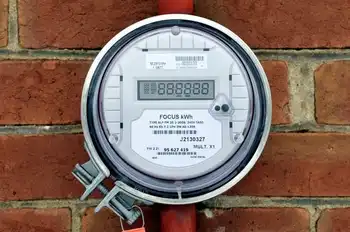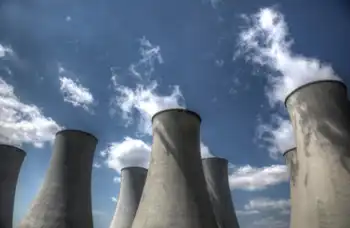Tiny utility grew into a power giant
By Knight Ridder Tribune
Electrical Testing & Commissioning of Power Systems
Our customized live online or in‑person group training can be delivered to your staff at your location.

- Live Online
- 12 hours Instructor-led
- Group Training Available
Even the company annals referred to the sign as a "huge flashing affair" that alternated between the words "Oklahoma Gas and Electric" and "Light and Power." OG&E was celebrating a "coming of age," according to a company history that commemorated the utility's 100-year anniversary. The utility served little more than 10,000 customers. It had just purchased two cars and a truck to complement its horses. It had acquired the El Reno Gas Co. about 28 miles west of Oklahoma City.
By today's standards, OG&E - now the state's largest electricity provider - was in its infancy. The company had struggled to provide consistent power to its customers. And its founder, Edward H. Cooke, and George W. Wheeler, its first president, had suffered through at least one false start. Wheeler took charge of an enterprise that seemed doomed from the outset, the first Oklahoma Gas and Electric Co. The company folded in 1899 after a fire claimed its power plant. And ensuing legal battles between the company and investors drained the company coffers, leading the utility to turn off streetlights on nights when the moon was bright.
Cooke, who was an investor in the first company, later joined with Wheeler. The pair, backed by investor Harry M. Blackmer, formed OG&E, which continues to this day.
The company was incorporated in 1902, five years before Oklahoma achieved statehood. Its portfolio of assets were measured in the number of lights rather than megawatts. The fledgling power company boasted 89 carbon arc streetlamps, 120 carbon arc lamps in businesses and 7,000 incandescent lamps throughout Oklahoma City. All tied in to the company's single power plant.
OG&E continued to grow, becoming the state's largest electricity provider by 1928. It was the first utility to use combined cycle power plants, which use steam and steam turbines to generate power. Today, OG&E generates power for more than 750,000 customers in Oklahoma and Arkansas through a combination of coal, natural gas and wind power.
The company has a generation capacity of 6,100 megawatts - enough electricity to power more than 5.5 million homes. Its parent company, OGE Energy Corp. is a publicly traded, diversified power company that operates a pipeline business and employs more than 3,000 people. In a letter to OG&E, former Gov. Frank Keating pegged the utility as "one of Oklahoma's original companies" and congratulated the OG&E family on reaching its centennial before Oklahoma did.
"From an era when electricity was a rare luxury to a new millennium where electric-powered communication spans the globe at the speed of light," he wrote, "OG&E has provided the energy to build, to grow, to prosper and to thrive."











